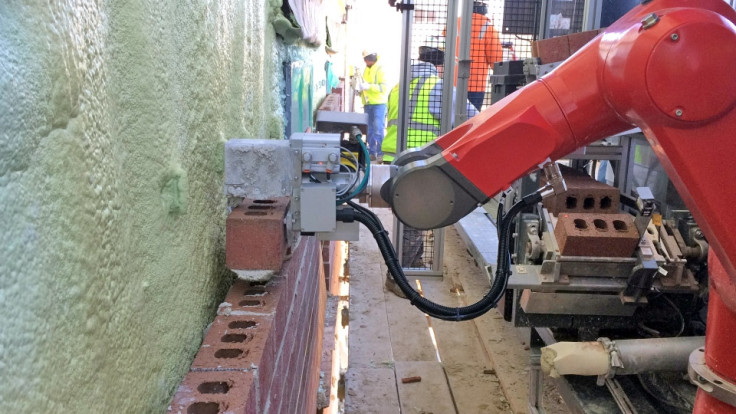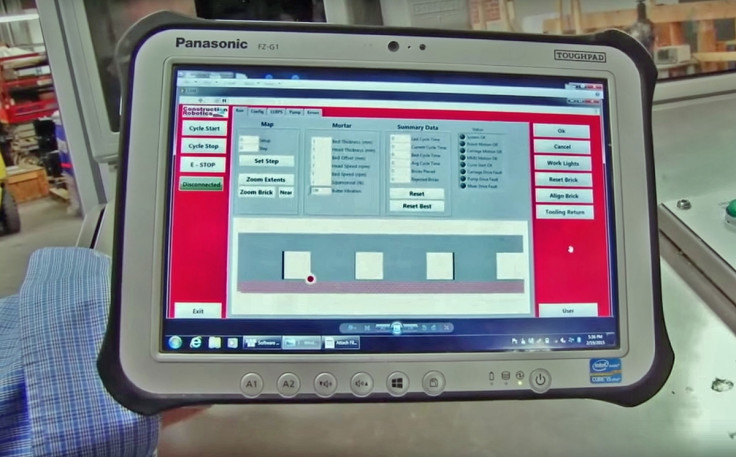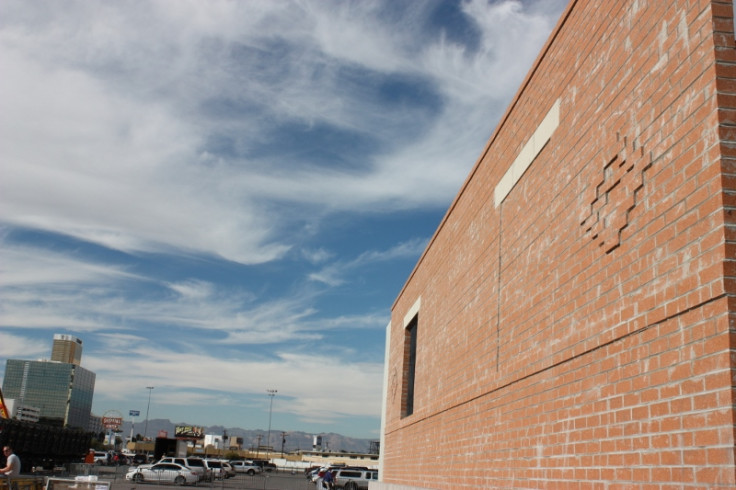Meet SAM, a £330,000 robot that lays bricks four times faster than a human [Video]

A New York-based company has invented a semi-automated robot that is able to lay bricks up to four times faster than a human can and it will be commercially ready in September. The Semi-Automated Mason (SAM) system costs $500,000 (£330,000) and has taken New York-based Construction Robotics eight years to develop and test out on construction sites.
The system is available to order and features a robotic arm that is able to pick up bricks, apply mortar and then lay each brick in the desired location to build up a wall, laying between 800 to 1,200 bricks a day. In comparison, a human mason can only lay about 300 to 500 bricks a day.
The robot can be mounted on scaffolding and is even clever enough to adjust for wind swaying the structure it is standing on, as well as to figure out the difference between the building's planned specifications and what's actually on site.
Robot saves heavy lifting, but still needs plenty of human direction
As its name suggests, the robot is not completely automated – a human needs to follow it and tidy up after it or carry out more intricate tasks such as laying corner bricks, so it will not be replacing anyone's job any time soon, while humans are also needed to run a control panel on a tablet that sends specific commands wirelessly to the arm.
What makes the robot useful, though, is the fact that it can save a great deal of lifting. It is also able to perform a wide array of functions due to computer algorithms, sensors that measure velocity, orientation and angles, and a laser that acts as the robot's eyes to sense depths and distance.
To that end, SAM can be programmed to create different types of brick bonds, or extremely complex patterns using different coloured bricks. It can also stamp a brick with a particular company's logo by following a digitised pixel version of an image, or bump bricks in or out of the wall by half an inch in order to create a textured appearance.
Robot unlikely to replace humans on the building site

According to Construction Robotics, in recent years a shortage in masons has led to the price of bricklaying increasing sharply. SAM can help with this since it can speed up the building of long stretches of wall, but when it comes to short stretches, it would still be more effective to use a mason and humans will still need to perform quality control on the robot's work.
"Your mason monitors wall quality, while SAM does the heavy lifting. Masons that haven't worked with SAM are hesitant at first, but once they learn and work with the robot they, and realise it won't take their job, they are very open to it," Zachary Podkaminer, operations manager at Construction Robotics, told Construction Manager.

To get SAM to work, masons first need to use Construction Robotics' proprietary software to design how they want their wall to look. Then when they get to the building site, they take specific measurements of where the doors and windows will go by looking at the actual building's progress, which might deviate from the plans slightly, and input that information into the tablet app.
Powered by propane gas, once SAM is installed on the level it needs to be on, the mason just needs to feed it enough bricks and mortar, and the robot can then run for hours on end in that particular setup.
Construction Robotics says it is building two more units of SAM that will be available for sale before the end of September. And, coincidentally, SAM bears a slight resemblance to the multi-axis 3D printing robot devised by Dutch startup MX3D in June that can print a steel bridge in mid-air.
© Copyright IBTimes 2025. All rights reserved.






















